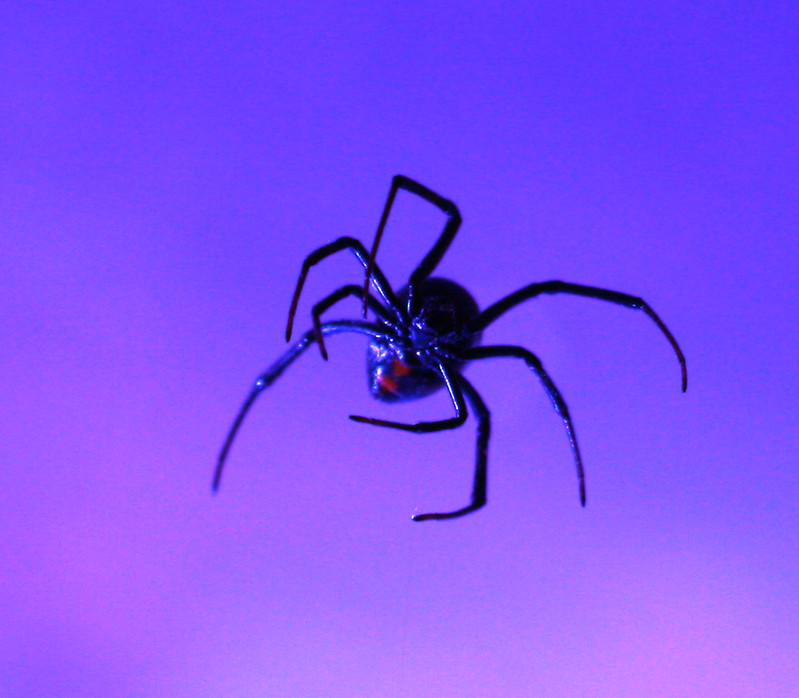How Vaccines Work
Vaccines aren’t so scary
Vaccines make a lot of people nervous to the point where there are entire communities rejecting them and even refusing to give their children basic vaccinations. This type of thinking is very dangerous and the reason why diseases like polio and measles are making a comeback. It’s worth looking at how vaccines work and whether or not there’s any potential harm. For example, can the flu shot really give you the flu? We’ll delve into vaccine science, focusing a bit on flu shots.

How vaccines work
When a disease-inducing organism, known as a pathogen, enters our system, our immune system can fight it off. The immune system produces antibodies—proteins that react to a specific pathogen. Once an antibody recognizes a pathogen, the entire immune system leaps into attack mode and the pathogen is destroyed. The problem is that if it’s a new pathogen—like, say, the flu when you haven’t had a flu shot—it takes time for the body to recognize and defend against it. The immune system has to “learn” about each new pathogen and that takes time. In the meantime, the person in question is probably pretty sick! Vaccines work by containing a deactivated version of the pathogen in question. By injecting it, the immune system gets a chance to learn about it and produce the necessary antibodies. This means that the next time the immune system runs into that particular pathogen, it’ll be ready to strike. In the case of the flu shot, this means killing the flu virus before it gets a chance to make you sick.
(more…)Magenta Isn’t a Real Color
We’re all familiar with magenta—it’s a kind of purplish-red that exists between blue and red on color wheels.

It’s one of four base colors used in printers to make other colors—along with black, cyan, and yellow. Interestingly, though, magenta isn’t a real color—our brain just makes it seem like it is. (more…)
Zebra Stripes Confuse Biting Insects
Spending time outdoors can be a lot of fun but what aren’t fun are biting insects! Flies and mosquitoes are a pain whether you’re hiking or chilling in your backyard. The good news is that science might finally have an answer.

Scientists have long wondered why zebras have stripes. Theories ranged from camouflage to keeping the animals cool—but all of these ideas lacked actual scientific evidence. Finally, a new theory emerged based on the ranges of zebras and biting flies. Biting flies were found in the exact same spots as zebras and scientists began to wonder if the stripes helped prevent bites (and therefore the diseases the flies spread). (more…)
Cherries Help Cure Insomnia
Can’t sleep? You’re not alone—one third of Americans develop insomnia at some point in their lives. You’ve probably heard a lot of the usual sleep advice: exercise during the day, no electronic use before bed, create a bedtime routine, etc. But what if those don’t work? Thankfully, science has found some new cures that might surprise you.

Foot Bath
Warm baths at night tend to help people sleep easier. Oddly, it doesn’t have to be your entire body! In one study, scientists found that warm baths helped cure insomnia. Interestingly, they found that it didn’t need to be your whole body—just dipping your feet in worked well enough. There was no difference between these foot baths and actual baths. So, if you have no time or desire to take a full bath, try soaking your feet in warm water before bed. (more…)
Forgetting Why You Came into a Room
Walking through doors causes your brain to reset
Have you ever walked into a room for something, only to forget exactly what that was? You’re not alone—it happens to everyone and psychologists call it the “doorway effect”. Human memories are episodic, as opposed to linear, which means they’re broken into separate “episodes”. Walking through a doorway creates a new episode and it becomes difficult to remember the previous one. In a way, walking through a doorway resets the brain.

The experiments
In a series of famous experiments at the University of Notre Dame, researchers tested the doorway effect using virtual rooms. (more…)
Foxes May Be the Next Domestic Animal
Cats and dogs evolved thousands of years ago, with other animals, such as livestock, following suit. Interestingly, there appears to be another type of domestication underway: the domestication of the fox. Experiments have shown it is possible and now foxes are becoming more domestic in cities.

The Experiments
In 1959, Russian scientists sought out to prove something: that you can domesticate an animal in a relatively short time via selective breeding. Selective breeding is when you breed animals for a specific trait and only breed those that show the trait. This is how we ended up with so many dog breeds—have you ever wondered how a wolf became a pug? Selective breeding is still used today, for producing everything from disease-resistant crops to countless types of chickens. (more…)
Cold Weather Doesn’t Disprove Climate Change
One common misconception about global warming is that it’ll impact each part of the globe in the same way. If it’s a global warming than why are some places getting cold winters? As it turns out, climate change is a bit more complicated than the Earth simply heating up in a uniform way. Climate change is exactly what it sounds like—a general change in the climate, not necessarily a single change that affects the entire planet evenly.

Modern climate change, which scientists agree is largely caused by human activities, is a global change in climate. Although often called “global warming”, some scientists are shying away from the term because it makes people think that the entire Earth is heating up uniformly. In reality, while most of the planet is heating up (2016 was the hottest recorded year since 1880—the third year in a row to set this record), climate change doesn’t mean that every single part of the world will get hot immediately. Parts of the globe that are already hot, however, will begin to experience extremely high temperatures and serious droughts. This is not only unsafe for humans but will affect crops and livestock. Global warming is technically a correct term since temperatures are increasing overall but it doesn’t mean that every region will be affected the same way—weather is a bit more complex than that.
As the planet heats up, there are changes in jet stream patterns and precipitation. Heat is energy and moist warm air can fuel intense tropical storms and other weather anomalies. This can cause extreme lows and extreme highs—snow in Egypt and temperatures above 125 degrees Fahrenheit in Iran. Jet stream patterns shift as Arctic ice melts; this can actually lead to colder temperatures in certain areas, as intensely cold Arctic air hits regions that aren’t normally exposed to such low temperatures. This explains some of the recent record low winters in parts of the United States. There are also plenty of weather events that aren’t directly caused by global warming—sometimes a cold winter is just a cold winter!
Cold weather happens, regardless of global warming or other types of climate change. A single event, whether it’s a drought or a blizzard, isn’t enough to prove or disprove climate change. Instead, scientists look at overall trends; the current analysis is that we are experiencing a global warming—and the global temperature is going up fast.
Broken Secrets: Email | Kindle | Facebook | Twitter
Photo: Fort Wainwright Public Affairs (cc)
Sources: noaa.gov, yaleclimateconnections.org, usa today
Poinsettia Plants Aren’t so Bad after All
As the holidays draw near, there are PSAs everywhere about how to protect your pet from the most dangerous of plants: the poisonous poinsettia. While the holidays do bring some extra challenges and risks for our pets, that particular danger is a bit overblown. Think twice before you ditch yours just because of a pet (or curious toddler). As it turns out, the poinsettia’s reputation is rather undeserved.

The poinsettia is naturally found in Mexico and has become a traditional holiday decoration. The plant has bright red and green leaves reminiscent of the Christmas season. For some reason, the poinsettia has been labeled as a toxic plant—dangerous to children, pets, and maybe even your spouse! In reality, there is very little evidence to back up this claim and Snopes believes the myth began as a faked news story about a toddler dying after eating a single leaf.
November 15, 2018 at 10:27 pm Stephanie Wolek Leave a comment
Seabirds Eat Plastic Because it Looks and Smells Like Food
Marine pollution is a well-known, continuous problem in our world’s oceans. Of the types of anthropogenic debris (waste originating from human activity), plastic is perhaps the most dangerous. Few plastics are biodegradable, which means they stick around for a very long time without breaking down. According to NOAA and the Mote Laboratory in Florida, it can take hundreds of years for plastics to degrade. The length of time varies based on the type of plastic, product, and environmental conditions—but that doesn’t change the fact that it takes an average of 450 years for a plastic bottle to break down! A fishing line can take 600 years. Even when they do break down, they release tiny pieces of plastic that seem to persist indefinitely. Even worse, they’re regularly consumed by marine animals—often by accident. This can cause serious health problems, resulting in mortality for a large number of birds and other sea critters.

Recently, a dead sperm whale was found with 64 pounds of plastic and other human waste in its stomach. It’s believed that the large amount of plastic was a major contributor to the animal’s untimely death. Plastics are even polluting the deep ocean, with many deep-sea creatures consuming microplastics (pieces of plastic about the size of a sesame seed or smaller) on a regular basis—including lobsters, crabs, and sea cucumbers. Of all the animals being affected, the worst off are probably the seabirds.





